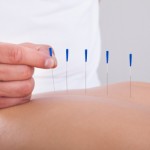

 Researchers have uncovered brain abnormalities responsible for tinnitus, chronic pain and phantom pain.
Researchers have uncovered brain abnormalities responsible for tinnitus, chronic pain and phantom pain.
Phantom pain is a painful sensation associated with a body part which is no longer there. Phantom pain is most recognized in those who have had a limb or extremity amputated or removed. A prior theory on phantom pain is that it is associated with a psychological problem, but research has shown a connection to the spinal cord sending signals to the brain.
In the newest findings, researchers from the Georgetown University Medical Center and Germany’s Technische Universität München found brain abnormalities which can contribute to phantom pain as well as tinnitus and chronic pain.
 Research findings showed how neural mechanisms that typically control noise and pain signals can become dysfunctional. This dysfunction can result in constant perceptions of pain sensations. By tracing the flow of signals, researchers were able to show where circuit breakers should be working but aren’t.
Research findings showed how neural mechanisms that typically control noise and pain signals can become dysfunctional. This dysfunction can result in constant perceptions of pain sensations. By tracing the flow of signals, researchers were able to show where circuit breakers should be working but aren’t.
In both tinnitus and chronic pain, the brain reorganizes itself in response to the injury. Tinnitus can occur due to noise damage which makes the brain continues to hear a hum. Chronic pain can be a result of the brain continuing to feel pain long-after an injury has been healed.
Director at the Georgetown University, Josef Rauschecker, said, “Some people call these phantom sensations, but they are real, produced by a brain that continues to ‘feel’ the initial injury because it cannot down-regulate the sensations enough. Both conditions are extraordinarily common, yet no treatment gets to the root of these disorders.”
The learning and reward centers of the brain are responsible for feeling these continued sensations. Rauschecker added, “These areas act as a central gatekeeping system for perceptual sensations, which evaluate the affective meaning of sensory stimuli – whether produced externally or internally – and modulates information flow in the brain. Tinnitus and chronic pain occur when this system is compromised.”
The same area of the brain which creates these changes is the same area which can hopefully lead to restoration.
Consultant neurologist, Markus Ploner, said, “Better understanding could also lead to standardized assessment of individuals’ risk to develop chronic tinnitus and chronic pain, which in turn might allow for earlier and more targeted treatment.
The findings are published in the October issue of Trends in Cognitive Sciences.
It is believed that phantom pain stems from the spinal cord and brain, although the exact cause is still unclear. With the use of MRIs it has been shown that portions of the brain which were connected to the amputated limb still show activity; hence, the person is experiencing phantom pain.
Some researchers believe phantom pain is the result of mixed signals in the brain as a response to an amputation. The loss of input from the missing limb disrupts the spinal cord and brain, which makes them act in unpredictable ways. This can cause sensations of pain.
Other studies have shown that amputation causes the brain to remap the missing body part’s sensory circuitry to another part of the body. Essentially, because that body part is no longer there, pain may be felt in another body part.
Other factors that cause phantom pain include nerve damage, scar tissue and physical memory of pre-amputation.
Symptoms of phantom pain may include:
There is a rise in new treatments for phantom pain, including the use of an electrical prosthetic limb, stimulating the motor cortex, and the potential use of virtual reality technology.
 There are helpful tricks you can utilize to prevent phantom pain after the loss of a limb, which includes:
There are helpful tricks you can utilize to prevent phantom pain after the loss of a limb, which includes:
Losing a limb not only physically changes you, but can result in phantom pain. Speak with your doctor about treatment methods while also utilizing the home remedies to best deal with phantom pain.
Amazing natural remedies for back pain relief
Statistics indicate that just over 30-million Americans experience low-back pain at some point in their lives. Actually, low-back pain is the leading cause of disability worldwide. Many cases of back pain are due to health conditions such as an infection, cancer, fractures or even inflammatory problems, like arthritis. Continue reading…
Do these 7 things to live life without pain
Throughout the course of our lives we have all experienced pain. Whether due to injury or illness, we all have felt pain. But shocking numbers now reveal that over 25 million Americans suffer from chronic pain. Continue reading…
 Rheumatoid arthritis in pregnant women linked to increased risk of premature and underweight babies: Study
Rheumatoid arthritis in pregnant women linked to increased risk of premature and underweight babies: Study
Copyright © www.orthopaedics.win Bone Health All Rights Reserved